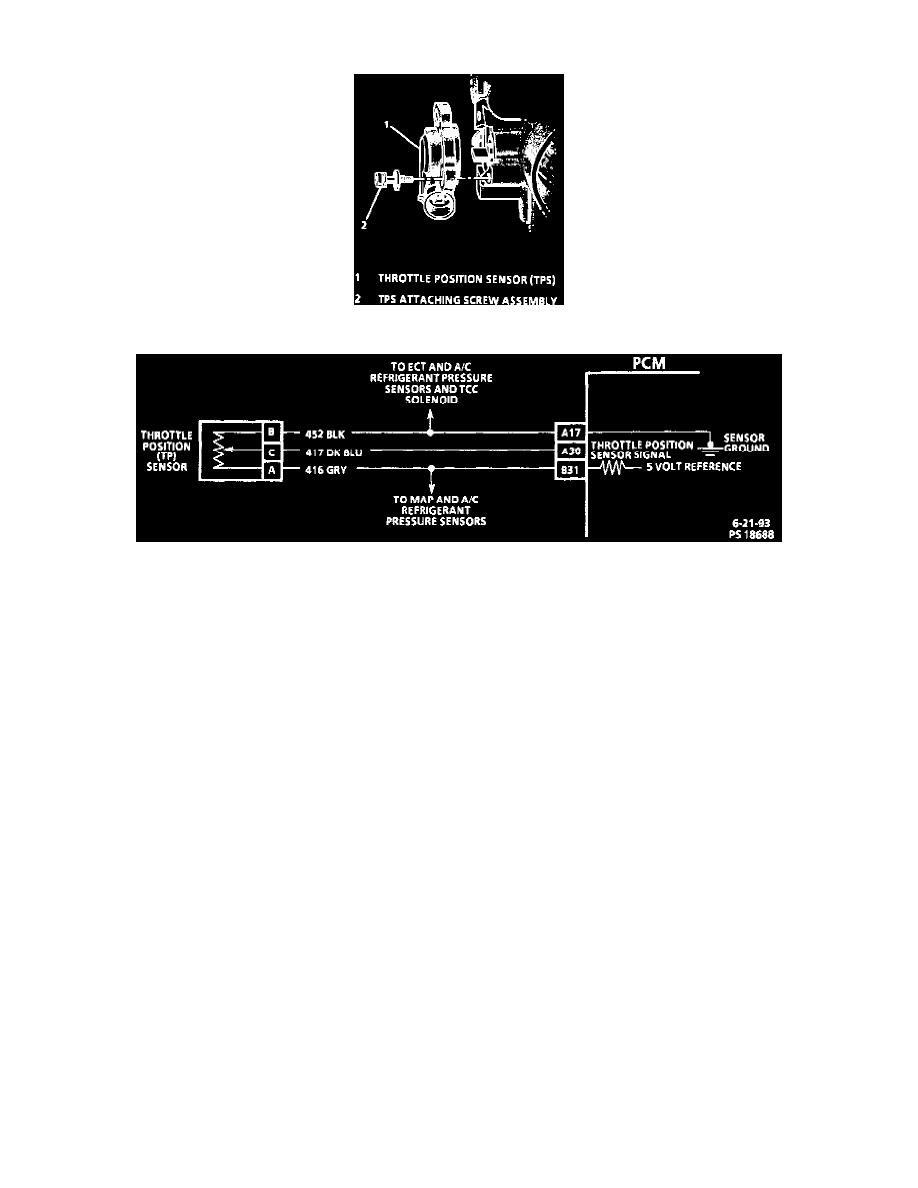Skylark V6-191 3.1L VIN M SFI (1994)

Throttle Position Sensor: Description and Operation
Throttle Position Sensor (TPS)
Throttle Position Sensor Wiring Schematic
PURPOSE:
The Throttle Position Sensor (TPS) is a potentiometer that senses throttle angle and sends a signal to the PCM. This input to the PCM is used to
control the fuel system on acceleration and deceleration.
OPERATION:
The TPS has three internal circuits. One to ground, a second from the PCM as a 5.0 volt reference source and a third circuit is used by the PCM to
measure the output voltage. As the throttle angle changes (pressing down on accelerator pedal) the TPS voltage output varies from about .5 volt at
idle to about 4.9 volts at wide open throttle (WOT).
The PCM can determine fuel delivery based on throttle valve angle (driver demand). A broken or loose TP sensor can cause intermittent bursts of
fuel from the injector and an unstable idle because the PCM thinks the throttle is moving. A problem in any of the TP sensor circuits should set
either a DTC 21 or 22. Once a diagnostic trouble code is set, the PCM will use an artificial default value for TP sensor and some vehicle
performance will return. A high idle will result when either DTC 21 or DTC 22 is set.
